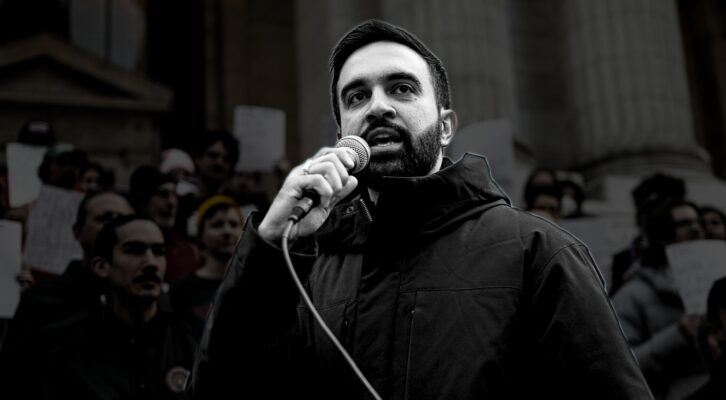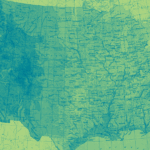When one thinks of Honolulu, I’m sure “noir” is not the first word to pop into one’s mind. Instead, one thinks surfing and hula—white sandy beaches and crystal-blue waters. Honolulu is a vacation destination. It’s a sanctuary for those seeking warmth during winter, sunny solace for the overworked and landlocked worldwide. Tourists want Honolulu and Hawaii in general to be what they imagine. They want their money’s worth. The powers that be in the state also want to preserve and promote this image for obvious financial reasons. Tourism is the state’s biggest industry.
However, when I think of Honolulu, where I was born and still live, my mind often harkens back to the Europeans who made earliest contact with the indigenous people of these islands. Famously, Captain James Cook was the first European to find the island chain in 1778. About a year later, he was stabbed to death by Native Hawaiians. The European sailor who was the first to lay eyes on Honolulu specifically, merchant ship captain William Brown, didn’t make it out alive either. He was also killed by Native Hawaiians. Of course, eventually, the tsunami of colonization washed over the islands. The killing of white explorers for breaking kapu—the code of conduct of the Native Hawaiians—stopped, and the wiping out of the Native people, mostly through disease, began. And the deliberate eradication of Hawaiian culture, perpetrated by Christian missionaries, soon followed. Between the time of Cook’s discovery in 1778 and the year 1900, 90 percent of the Native Hawaiian population perished.
After Captain William Brown’s misfortune, Honolulu was first established as a whaling port. And from there, the town grew. In 1850, it was declared the capital of the Hawaiian Kingdom by King Kamehameha III. It transformed into a city that exported sugar and pineapple to the United States. In the 1800s, Melville, Twain, and Robert Louis Stevenson visited and found it a “worthy” place to write about. And while Native Hawaiians died in droves, business was booming. Labor was imported from Japan, China, Portugal, and later, the Philippines and Korea, among other places. A new dialect, an English-based creole, was born so that all these plantation workers could communicate with each other in the sugarcane fields. We call it pidgin, and it still thrives today. By 1893, the monarchy was overthrown by the plantation owners, and in 1898, Hawaii was annexed by the United States. In 1899, the first car came to Honolulu. In 1900, the first auto theft followed (I credit historian Gavan Daws for this tidbit). I’m not even into the twentieth century, and I’m telling you that, tragically, Honolulu is a great place for noir fiction.
The sugar and pineapple fields are now gone, and tourism is king, the hotels and resorts the new plantations for those who live here. And we have our problems. To this day, Native Hawaiians and other Pacific Islanders are disproportionately incarcerated and victims of poverty in a place where the average cost of a single-family home has skyrocketed to a million dollars. It’s not uncommon for four generations of a family to live in the same house. Drugs, homelessness, child abuse, and sex trafficking are pervasive. Development on sacred land still persists with impunity. There’s also a tough-guy, testosterone-fueled feel to this city. Outside the handful of affluent neighborhoods, one can’t drive more than several blocks without seeing a tattoo parlor or mixed martial arts gym. Among our present heroes are MMA champions Max Holloway and B.J. Penn. Before them, there was Akebono, the first grand sumo champion born outside of Japan, and Super Bowl champions Russ Francis, Jesse Sapolu, Mark Tuinei, and a prolific list of pro boxers and wrestlers. That attitude that led to the demise of the first explorers who arrived over two hundred years ago—it still exists. Kapu may no longer be enforced, but there’s still a code here. A proper way to act. And it’s honored with fists. I’m not just talking about males either. We have titas and mahus who can scrap.
Unlike most American cities, Honolulu (and Hawaii in general) is also a place teeming with myth. Pele, the goddess of fire; Kanaloa, the god of the ocean; Laka, the goddess of hula; and Kane, the god of creation and sky—Native Hawaiians have always had their own gods, and the supernatural continues to endure in the consciousness of this place today. From mo‘o (shape-shifting lizard spirits) to ‘aumakua (ancestral spirits transformed into creatures like sharks and owls)—nature and myth are still often intertwined in just about every art practiced here. The Japanese, Chinese, and others brought along their spiritual beliefs well over a century ago and added to the vibe. To this day, there are places considered haunted, and practices to avoid (for example, don’t take pork from one side of the Pali Mountain to the other or bad shit will happen to you). I challenge anyone to find me an American city with more believers in ghosts per capita.
Honolulu is also the great bridge of the Pacific. And when it comes to noir, this makes it a setting with unique potential. There has been a yakuza presence here as far back as I can remember. Cocaine distribution is rumored to be run by the Mexican cartels along with Samoan gangs on the West Coast with connections to Hawaii. It’s been said that much of the crystal meth was originally imported from South Korea. We used to know who ran organized crime in Honolulu, or at least some of its major players. Back in the day (in the 1970s and 1980s), there were Charlie Stevens, Henry Huihui, and Ronnie Ching. They bribed judges. Their body count included informants, a labor leader, the son of a prosecutor, and a state senator. When I was a young child, names like these were spoken with fear and reverence. Now, it’s a mystery who runs the show. The feds come here and clean house every handful of years. The names of the corrupt quickly come and go. Today, most likely, no one entity or group lords over crime in Honolulu. Like just about everything else, whether it be land or the rackets, it’s being gobbled up by outside forces from both East and West. Outside forces so powerful and scary that the few in the know don’t want to talk about them, and most don’t want to ask. This leaves a lot of room for fictional speculation. When you’re a small island chain that’s part of an empire, it’s hard not to feel like you’re just being slowly digested.
I was excited to be tasked with editing this anthology because the setting of Honolulu for the purposes of noir is and always has been full of possibility. Wherever crime, poverty, and corruption exist, noir is easy, and despite its glossy reputation, Honolulu has all these things. On top of that, I’m betting this will be one of the most diverse anthologies in Akashic Books’s impressively popular and abundant collection.
Native Hawaiian writers like the great Kiana Davenport, Lono Waiwaiʻole, and Christy Passion have contributed. Writing vets Mindy Eun Soo Pennybacker and Stephanie Han are Korean Americans, one born and raised here, and the other, who has roots here, has made Honolulu her home. Michelle Cruz Skinner is a well-known Philippine American writer. Scott Kikkawa, our resident historical noir novelist, is of Japanese descent. Then there’s the mutts (part Japanese and part other stuff) like me, B.A. Kobayashi, and Morgan Miryung McKinney. Hawaii is the only state where Asian Americans and mixed-race Americans outnumber white residents. That’s reflected in this collection. The prolific Alan Brennert, Don Wallace, and Tom Gammarino generously round out the list of authors. I’m deeply grateful to all of these contributors.
We all mostly get along in this city in the middle of the Pacific Ocean, about 2,500 miles from the closest continent. And when we don’t? Well, you can read all about it here in Honolulu Noir.
Chris McKinney
Honolulu, Hawaii
July 2024
___________________________________


















